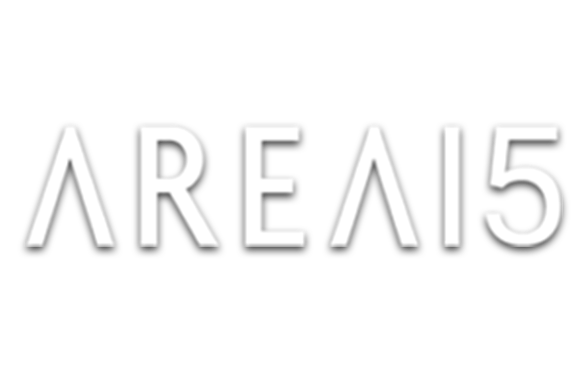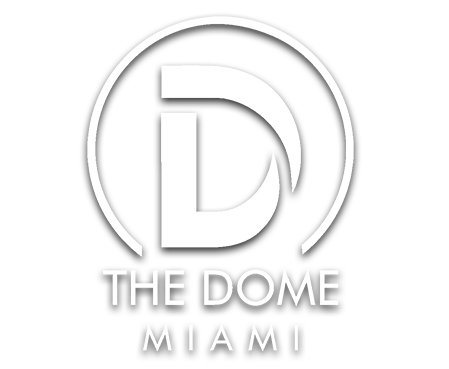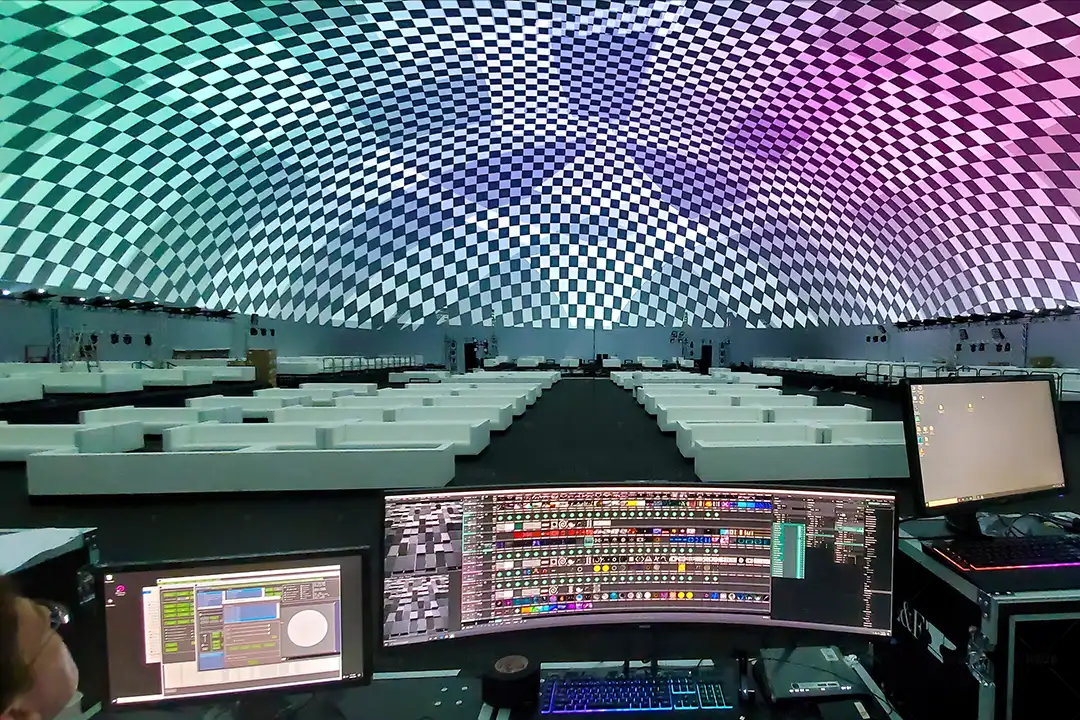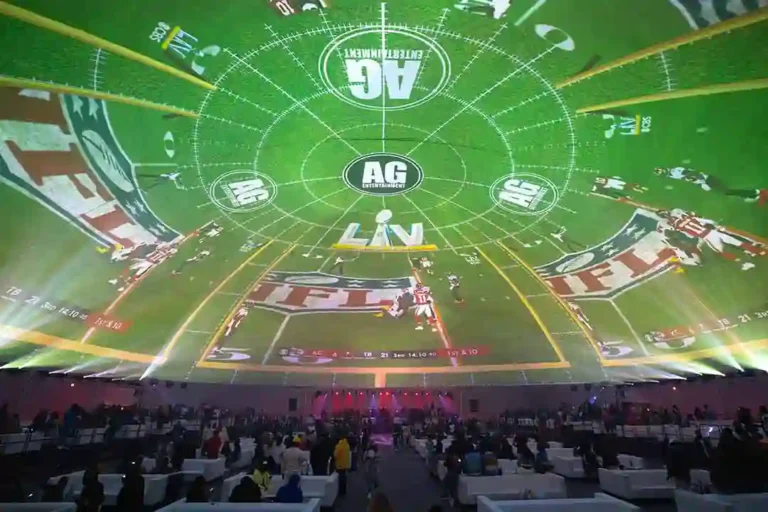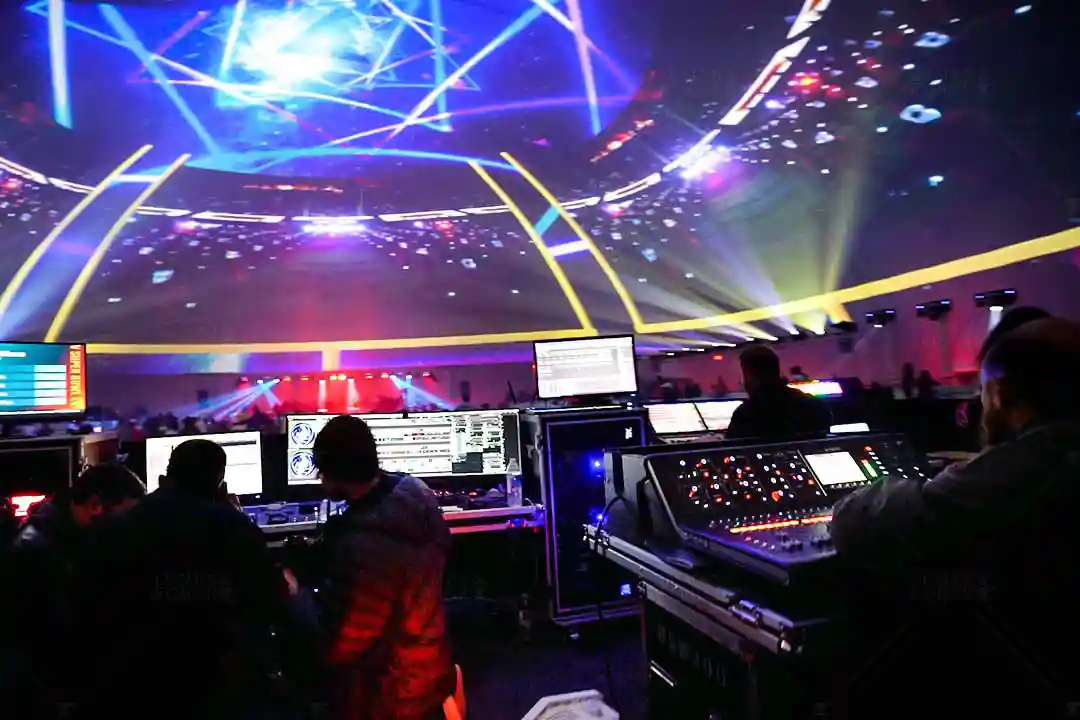Immersive technology merges the physical and digital worlds to create unique, transformative experiences. In the realm of sports, this technology is redefining spectator engagement, turning traditional viewing into a multi-sensory experience. Whether through VR headsets, AR apps, or projection mapping at stadiums, these technologies are making their mark. From the comfort of your living room to the electric atmosphere of a packed stadium, immersive technology is connecting fans with events like the Super Bowl in remarkable ways, offering a glimpse into the future of sports entertainment.


The New Playbook: Applications of Immersive Technology in Sports
While VR, AR, and projection mapping are prominent in immersive sports technology, other innovations are enhancing the fan experience too. IoT sensors in smart stadiums provide real-time athlete performance data, while interactive mobile apps offer multi-angle instant replays and social media integration. Some venues are even experimenting with haptic feedback, allowing remote fans to “feel” the stadium’s excitement.
These technologies are transforming passive viewers into active participants, blurring the line between spectator and player, and opening new avenues for fan engagement and revenue generation in the world of sports entertainment.
Immersive Technology at the Super Bowl
The Super Bowl, America’s premier sporting event, has become a showcase for cutting-edge immersive technology. Each year, the Super Bowl introduces innovative ways to captivate its massive audience, both in the stadium and at home. From jaw-dropping halftime shows enhanced by state-of-the-art projection mapping to augmented reality features that transform living rooms into interactive viewing zones, the Super Bowl consistently sets new standards for immersive sports experiences.
Let’s explore some of the most notable applications of immersive technology that have turned the Super Bowl into a testbed for the future of sports entertainment:

1. Projection Mapping
Projection mapping is a versatile technology that transforms ordinary surfaces into dynamic visual displays by using specialized projectors. Unlike traditional projection, which casts an image onto a flat screen, projection mapping can adapt to 3-dimensional surfaces like buildings, stages, or even people. This makes it a popular tool for events, advertising, and artistic installations. It can bring static objects to life by overlaying animated visuals that interact with the physical world in real time.

Usher’s 2024 Halftime Spectacle:
At the Super Bowl 2024, Usher’s halftime show made extensive use of projection mapping. The technology transformed the stage into a reactive canvas that synced with the music, amplifying the performance’s energy. As the beat hits, such as “Yeah!” and “OMG,” pumped through the stadium, the lights and visuals seemed to ripple and move in time with the music. This effect allowed the stage to change atmospheres from an arena, to a nightclub vibe, creating a futuristic display.Projection mapping was also key in enhancing the guest performances, including appearances by Alicia Keys, Ludacris, and H.E.R., as it helped bring visual depth to the various collaborations and themes featured. The show used the technology to interact with the performers, projecting visuals that emphasized their movements and added an extra layer of drama and engagement to the show.
2. Virtual Reality
Virtual Reality (VR) is revolutionizing how fans experience the Super Bowl from home. This immersive technology transports viewers into a 360-degree digital environment, offering unprecedented access to the game and its surrounding events. VR is an computer-generated environment experienced through a headset that provides a 360-degree view, often with 3D sound and hand-tracking controllers for interaction.
VR tracks your head and body movements, allowing you to explore and interact with virtual worlds as if you’re physically present. Whether gaming, exploring new environments, or engaging in social experiences, VR combines visuals, sound, and haptic feedback to create a sense of presence, making the virtual world feel real. When it comes to the Super Bowl, VR is transporting spectators from their couch directly into the heart of the action.



Apple Vision Pro's Super Bowl Experience:
For Super Bowl LVIII, Apple showcased its new “mixed-reality” headset, the Vision Pro. This device blends virtual reality (VR) and augmented-reality technologies (more on this later), offering fans a groundbreaking way to engage with the event. Apple provided a 4-minute Vision Pro experience that virtually transported users onto the field, into the locker room, along the sidelines, and even into the winning team’s celebration.This technology transformed at-home viewing from a passive experience into an interactive, personalized journey. Vision Pro users felt as if they were part of the action, experiencing intense, up-close moments without leaving their couch. This leap in technology signals a shift towards hyper-personalized, immersive sports spectatorship.
Why is this such a big deal? This leap in technology signals a paradigm shift towards hyper-personalized, immersive sports spectatorship. Apple has redefined home viewing, turning what used to be a standard experience into something deeply personal and interactive. With this new way to enjoy sports, the line between being a spectator and feeling like a participant is increasingly blurred, opening up exciting possibilities for the future of sports entertainment.
3. Augmented Reality
While VR creates entirely new environments, Augmented Reality (AR) enhances the real world with digital overlays. Digital elements like images, text, or animations, are viewed through a device such as a smartphone, tablet, or AR glasses. Unlike VR, AR keeps you grounded in your physical surroundings while adding interactive layers of information or visuals on top. This technology is used for gaming, navigation, shopping, sporting, and educational experiences, seamlessly blending the virtual and real worlds to enhance your everyday environment. In the context of the Super Bowl, AR is changing how viewers interact with and understand the game.
CBS Sports' AR-Enhanced Broadcast
CBS Sports took their broadcast to the next level with AR technology, giving viewers an even closer look at the action from every angle. Using an impressive array of 23 AR cameras, CBS layered graphics directly into the live coverage, adding a whole new dimension to the at-home experience.
These AR enhancements play a crucial role in enhancing Super Bowl viewership. By providing real-time stats, player highlights, and visual effects, they break down plays and key moments in ways never before possible. Viewers can now see dynamic overlays like player routes, ball trajectories, and on-field measurements, making the game not just more fun and exciting, but easier to follow and understand. By transforming passive spectating into an interactive, immersive experience, CBS has set a new standard for sports broadcasting.


4. Drones
Drones provide both practical and entertainment uses. These unmanned aerial vehicles (UAVs) are equipped with high-resolution cameras, GPS systems, and advanced stabilization technology. They offer unparalleled flexibility in capturing aerial footage and creating spectacular light shows.
In sports broadcasting, drones provide unique bird’s-eye views and dynamic movement shots that were previously impossible or extremely costly to achieve. They can fly close to the action without disrupting play, offering intimate perspectives that enhance the viewing experience. Additionally, advances in drone swarm technology have opened up new possibilities for large-scale aerial displays.

CBS’ Bird's-Eye View of the Big Game
During Super Bowl LVIII, CBS leveraged drones to capture stunning flyby shots of the Las Vegas Strip, adding a cinematic quality to the broadcast. These aerial views provided context and wow-factor, showcasing the event’s grand scale and Las Vegas’ iconic cityscape. The use of drones allowed for unique perspectives that were previously impossible or extremely costly to achieve, enhancing the viewing experience for millions of fans watching from home.
Sky Elements' Super Bowl Drone Show
As fans exited Allegiant Stadium, they were treated to a mesmerizing drone light show that illuminated the sky. Sky Elements, a company renowned for innovative drone entertainment, orchestrated this spectacular display using a fleet of 1,000 drones. Launched from nearby Resorts World, the drones created a visual show. The display featured massive 400-foot football players, end zone celebrations, and the iconic “Welcome to Las Vegas” sign, which had everyone looking up! This drone show exemplifies a growing trend in large-scale events. Unlike traditional fireworks, drone displays offer precision control, reusability, and are environmentally friendly. They’re quieter, produce no smoke or debris, and can create more complex, animated designs. This innovative use of technology not only extended the Super Bowl experience beyond the game itself but also showcased the potential of drones in creating unforgettable event experiences.
Future Applications of Immersive Technology at the Super Bowl
The future of immersive technology at the Super Bowl holds exciting possibilities that could completely change how fans experience the game, whether they’re at home or in the stadium. Here are some exciting possibilities on the horizon:
- Personalized virtual reality (VR) experiences: With advancements in VR technology, fans might soon be able to watch the game from any perspective they choose, whether that’s from the quarterback’s point of view, the sideline, or even a bird’s-eye view above the field.
- In-Stadium AR: Augmented reality (AR) could also play a role in enhancing the live experience, offering real-time stats, instant replays, and even guiding assistance for concessions and facilities.
- Holographic Replays: Another exciting possibility is the introduction of holographic replays. Imagine life-sized, 3D replays of key plays projected in your living room or within the stadium, allowing for 360-degree analyses of the action.
- Virtual Watch Parties: Immersive tech could create shared virtual spaces where fans from across the globe could meet in a virtual space to watch the game together, fostering a sense of community regardless of physical location.
- Advanced Projection Mapping: The entire field or stadium walls could be transformed into reactive canvases, with 3D animations responding in real-time to game events, touchdowns, or major plays. This could create a more visually striking and immersive atmosphere that amplifies the energy of the game both in-stadium and at home.
- AI-Enhanced Experiences: Artificial intelligence could personalize each viewer’s experience, offering tailored insights, statistics, and commentary based on individual preferences and viewing history..
The Super Bowl has always been more than just a game – it’s a cultural phenomenon that brings millions together. Immersive technology, from projection mapping that transforms stadiums into dynamic visual displays to personalized VR experiences, AR-enhanced broadcasts, and AI-tailored insights, is set to make every Super Bowl more interactive and engaging than ever before. As stadiums become dynamic canvases and living rooms transform into virtual arenas, the line between spectator and participant continues to blur.
As we embrace these technological advancements, the challenge will be to use them in ways that enhance, rather than replace, the human connection that makes sports so powerful. The future of sports viewing, as showcased by the Super Bowl, is not just about spectacular visuals or data-rich experiences. It’s about creating shared moments, fostering community, and amplifying the emotions that draw us to sports in the first place. In this tech-enhanced future, every fan can feel like they’re right in the heart of the action, no matter where they are.


At Lumen and Forge, we specialize in bringing cutting-edge immersive technologies to life for a wide range of events and venues. With over 18 years of experience, we offer comprehensive solutions including projection mapping, AR experiences, content creation, and other innovative tech integrations. Whether you’re planning a major sporting event, enhancing a stadium experience, or creating unforgettable moments for any large-scale gathering, our team provides turn-key services from concept to execution. Interested in elevating your next event with state-of-the-art immersive experiences? Contact Lumen and Forge today to explore how we can transform your ideas into reality.



























